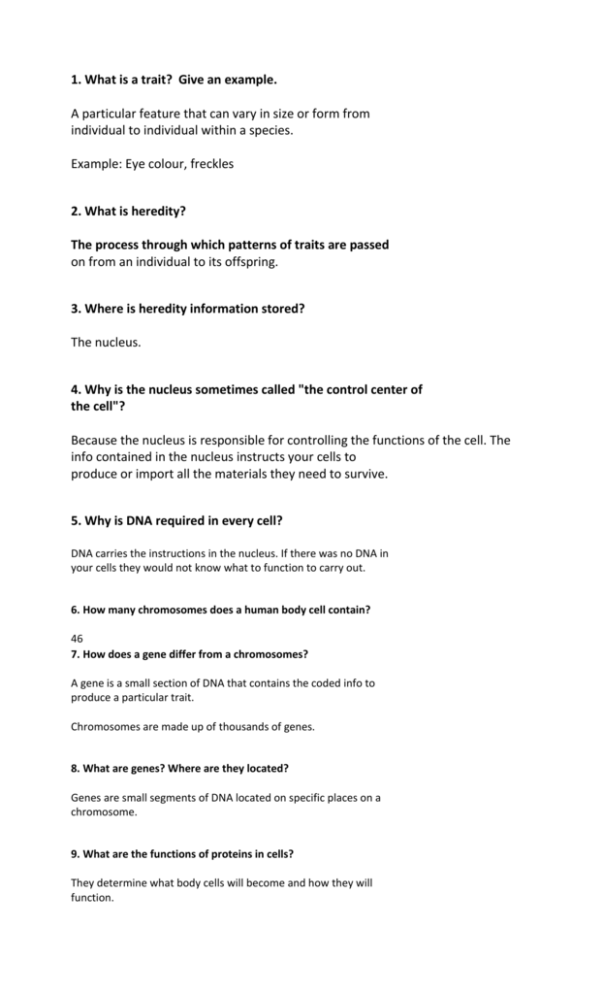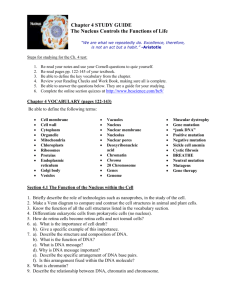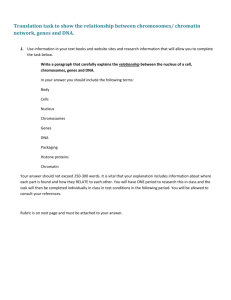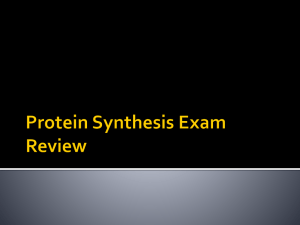Genetics Basics: Traits, Heredity, and DNA Worksheet
advertisement

1. What is a trait? Give an example. A particular feature that can vary in size or form from individual to individual within a species. Example: Eye colour, freckles 2. What is heredity? The process through which patterns of traits are passed on from an individual to its offspring. 3. Where is heredity information stored? The nucleus. 4. Why is the nucleus sometimes called "the control center of the cell"? Because the nucleus is responsible for controlling the functions of the cell. The info contained in the nucleus instructs your cells to produce or import all the materials they need to survive. 5. Why is DNA required in every cell? DNA carries the instructions in the nucleus. If there was no DNA in your cells they would not know what to function to carry out. 6. How many chromosomes does a human body cell contain? 46 7. How does a gene differ from a chromosomes? A gene is a small section of DNA that contains the coded info to produce a particular trait. Chromosomes are made up of thousands of genes. 8. What are genes? Where are they located? Genes are small segments of DNA located on specific places on a chromosome. 9. What are the functions of proteins in cells? They determine what body cells will become and how they will function. 10. Explain the function of a gene in a cell. To produce specific proteins in your cells so they can carry out a particular function. 11. If you think of DNA as a chemical alphabet, how could you describe genes and chromosmes? Chromosomes would be the "words" Genes would be the "letters" in each "word" 12. What is a gene mutation? A change in the order of the A, G, C, and T bases in a gene. 13. How can a gene mutation cause a change in an organism? It can cause a positive, negative, or neutral mutation by either a deletion, addition or substitution of a base (A, G, C, T) 14. Give an example of a positive mutation. HIV resistance or immunity. 15. Give an example of a negative mutation. Sickle cell anemia. 16. Give an example of a neutral mutation. Colour of an animals coat (black fur versus white fur) 17. What is a mutagen? Substances or factors that can cause mutations. 18. Describe two sources of mutagens. 1. Nature - UV rays, gamma rays, Xrays. 2. Human Activity - smoking, cleaning products. 19. How do viruses cause mutations? A virus can disrupt the instructions stored in genes. The virus attaches to the DNA and can cause genes to be misread or copied incorrectly.











